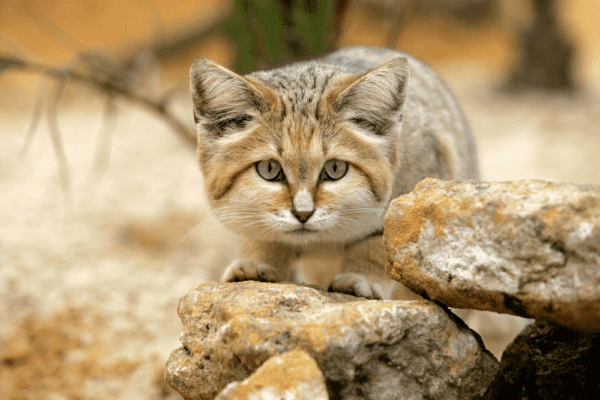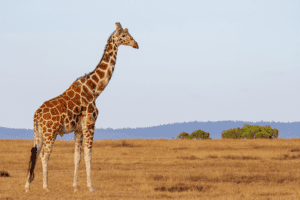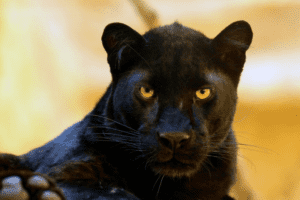Sand cats are desert dwellers, and they have a variety of desert habits. Human activities cause a significant change in an ecosystem, resulting in the endangerment of sand cats and other rare species.
Sand cats are small wild cats with a mixture of plain yellow and greyish coats on their bodies. Besides the Sahara Desert, they are also found in some parts of North Africa. For the past decade, their population has decreased in both North Africa and Sahara.
Table of Contents
Reasons why sand cats are endangered Specie?
Let’s look at some of the reasons why are sand cats endangered.
1. Human Activities
There are many endangered and extinct animals globally, and the main reason for their endangerment is humans. Some hunters hunt sand cats to sell their fur because they have very thick and soft skin, which is in much demand.
This should be illegal in every country and region because sand cats are already endangering species and their hunt make them more extinct in the world.
2. Loss of Vegetation
Loss of vegetation is another reason why sand cats are endangered. The vegetation is lost because there is more infrastructure development and human settlement on sand cat lands.
3. Destruction of Desert Ecosystems

Desert ecosystems are being degraded due to unnecessary human activities. This impacts the population of sand cat’s prey. When there is no food, there are fewer chances of the sand cat’s survival.
4. Competition for Prey
Due to feral cats and stray dogs, there is more competition for getting food. Sand cats find it difficult to compete with stray dogs, who are much stronger and more active than them.
5. Trade of Pets

Many people trade pets, and sand cats are on the top of their list. Traders think sand cats are nice pets, and they trade or sell them in the market, making them an endangered species.
6. Traps and Fences
Traps and fences are also one of the big reasons why the population of the sand cat is declining. Humans put traps in the desert or in the wild to catch animals. Sand cats get hooked on them, and if left for many days, they die due to starvation.
Is Habitat degradation being a cause of endangerment of Sand Cats?
Why are sand cats endangered? Habitat degradation is the primary threat to sand cat’s endangerment. IUCN listed the sand cats as ‘threatened species’ as their ecosystem is affected by human activities and the predator-prey system.
Sand cats’ Ecology
Sand cats are diggers by nature, and digging is necessary for their claws to sharpen in the desert because there is the opportunity for them to dig there. They are called the cat that digs a hole in the desert, especially in Sahara, and they are known as snake hunters there.
When they walk through open places, they keep their profile low and enable their lower ear to stalk their prey. Sand cats can survive on the moisture requirements left by their prey.
Sand cats are secretive animals and are mostly seen at night. By nature, they are nocturnal animals and spend a lot of time in daylight. In daylight, they are seen on the ground near their burrows, and at night they take their position at their den.
Habitat of Sand Cat
Sand cats are the smallest of wild cats and live in the north and south African deserts, where they adapt to both sandy and rocky desert environments. They are rare species and can maintain themselves in hot and cold weather.
Sand cats are desert dwellers and live in three different regions of the world: Africa, Sahara Desert, Arabian Peninsula, and in parts of central Asia that include Pakistan, Uzbekistan, and Tajikistan.Sand cats like dry habitats in which they adapted well because they are sand-dwelling creatures, so they usually like extreme weather conditions.
What do sand cats eat?

Sand cat eats small birds like hoopoe lark and desert lark. They feed other mammals like them, including sand vipers, horned vipers, desert monitors, and fringe lizards.
Sand cats are the habitats of the desert and catch all the required moisture from their prey.
Are Sand Cats being rare species?
Sand cats became rare species due to habitat destruction and change. Livestock grazing and competition of prey and predator is also the cause of endangerment in sand cats.
In different countries, sand cats are part of predator-prey competitions; in Iraq, shepherd dogs kill sand cats. Habitat destruction in Arab and Syria has also affected the sand cat specie.
How many sand cats are left in the world?
Sand cats are becoming distinct day by day because of the ecosystem and human prey. According to a survey, the total estimated population of sand cats is 27 thousand, and sand cats are becoming rare in range.
How to save endangered sand cats
Why are sand cats endangered? Sand cats are becoming rare, so we need to save endangered sand cats by some measures which need to be taken care of:
1. Trade agreements
Some sand cats are taken for trade, which is why they are becoming endangered. To stop these, some international trade agreements must be made to ensure their safety.
This agreement must restrict the hunt of this specie and the products made by them.
2. Hunting should be banned
Hunting of sand cats should be banned in any area. Because they are rare species and some cats are small, making them an easy target for their predator.
Some hunters participate in illegal hunting and trading of sand cats and sell them at a high cost, further making products from them. In some regions, hunting is banned, including Pakistan, Iran, and Israel.
3. Do breeding
Zoos in several regions should encourage the breeding of sand cats. Some zoos in the United States are participating in these programs to extend the specie generation of sand cats.
These authorities have to make sure that cats breed properly with their mate and produce off-springs. After the birth of offspring, they should be protected and taken care of.
Why Sand cats are impossible to track?
Sand cats are usually seen at night, and it becomes difficult for their prey to find and hunt them. They close their eyes when their predator comes near them and ultimately maintain them according to their environment.
Their paws help them act as a cushion and allow them to pass across the sand without getting burned by heat.
Are sand cats dangerous for humans?
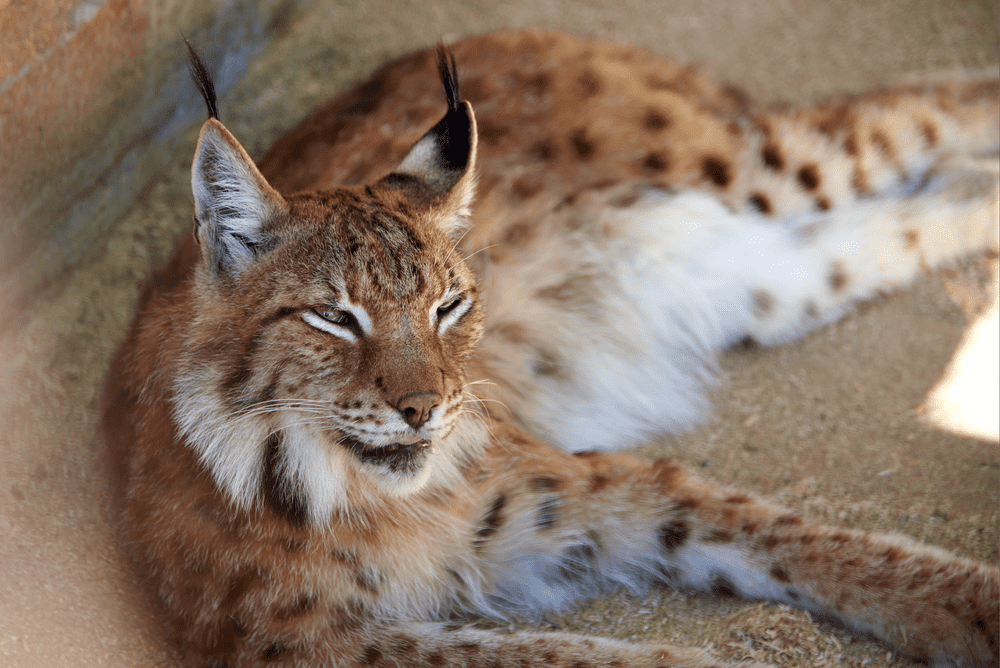
Sand cats might be dangerous for humans, but it depends on how you treat them or interact with them. If you pick up domestic sand cats without his permission, they become defensive, and there is a chance that you might get poorly scratched.
There is no case about sand cats harming humans, but you should keep in mind the fact that they are domestic animals, so you should have to be careful with them because they might hurt you.
Can you keep a Sand Cat?
Sand cats may look like house cats, but you should not mix them because they are different and are wild by nature; therefore, you cannot have them as pets. They are more curious than regular cats and get bored quickly.
One of the reasons you can’t have them as a pet is human ignorance, and they require more attention than a normal get, and a human’s ignorant behavior can make them sick. However, some hunters hunt them to sell them in a black market, but they aren’t illegal.
Predators of Sand Cats
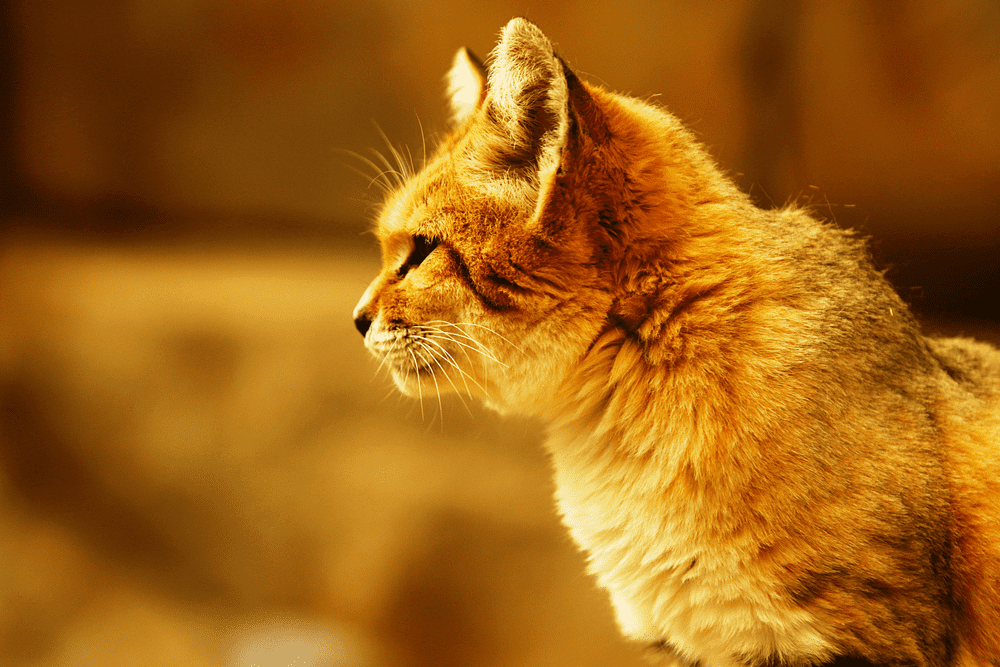
Sand cats have a lot of predators and enemies because they live in a desert. There are many poisonous and dangerous animals present in the desert. Snakes are considered to be the most deadly predator for a sand cat. Snakes can be super sneaky and catch the sand cat in one snatch.
Foxes hide well and they are considered to be the major predators of sand cats. Other predators of sand cats include wild dogs, leopards, etc.
How long do Sand cats Survive in the Wild?
Sand cats can survive for a long period of time in the deserts due to their ability to dig to create shelter from extreme weather conditions. Sand cats can live up to 13 years in human care. The exact lifespan in the wild is unknown. No doubt habitat loss is leading to the decline of this species.
Read Also: Why Are Giraffes Endangered And How Can We Help
Article Research: Felis margarita (Sand Cat) (iucnredlist.org)

